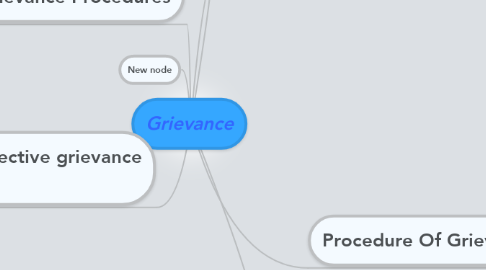Grievance
저자: Aloysius Lee


1. What is Grievance?
1.1. Grievance is the amount of dissatisfaction or discontent in the perspective of an employee regarding issues related to the company of them being treated unfairly or violation of rules or contracts.
2. Causes of Grievance
2.1. Violation of management's responsibility
2.2. Management Policies
2.3. Working Conditions
2.4. Personal Issues
3. Key Guidelines to effective grievance handling
3.1. Listening
3.2. Root of Problem
3.3. Reasonable time frame for solution to be provided
3.4. Empathetic
4. Different Grievance Procedures
4.1. Unionized
4.2. Non-Unionized
5. New node
6. Why is Grievance handling important to the organization?
6.1. Grievance handling is an important aspect in Singapore as the local working society consists of a great diversity as compared to other countries, hence, there is likely higher chance for misunderstandings and miscommunication to spark off.
6.2. What if Grievance is not handled properly?
6.2.1. 1) Employee's morale will drop 2) Employee's productivity will decrease 3) Employee relationship with superior is poor
